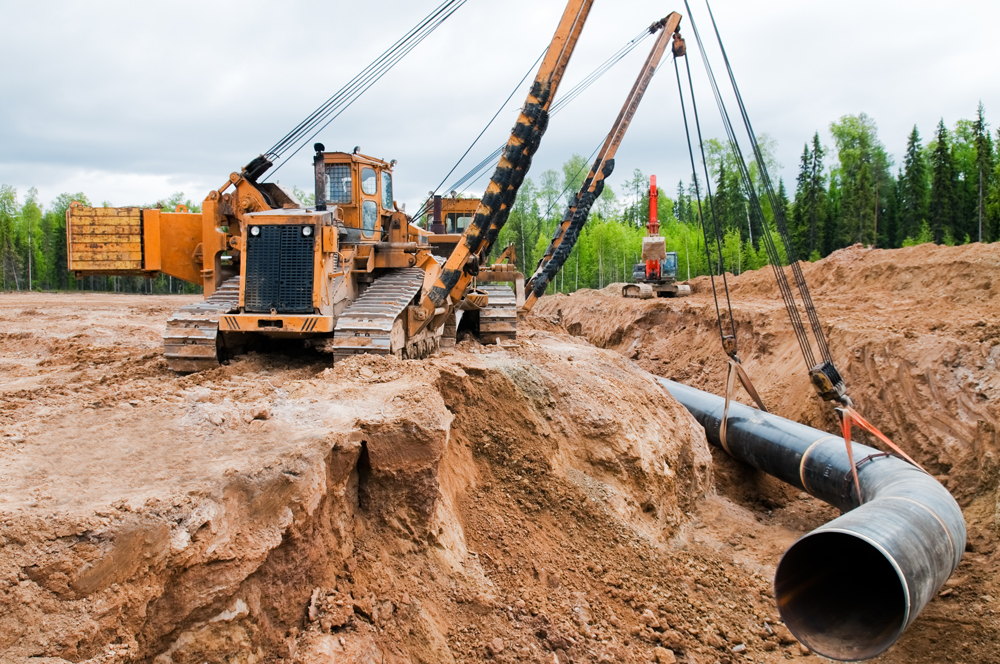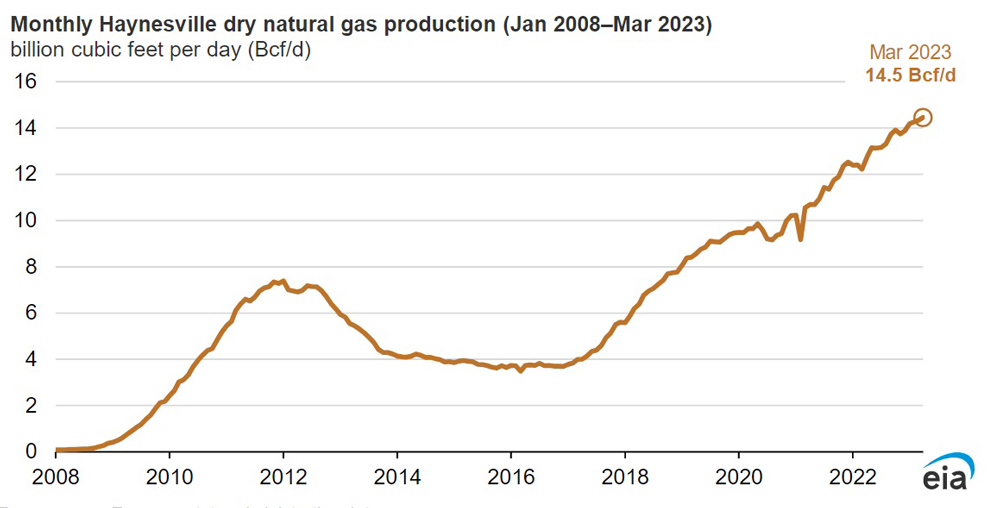August 2023, Vol. 250, No. 8
Features
Haynesville Riding LNG Wave to Gulf Coast
P&GJ Staff Report
(P&GJ) — With the primary driver of U.S. natural gas demand growth continuing to be LNG exports, the bottlenecked pipeline takeaway capacity in the gas-rich Marcellus Shale has left the Haynesville shale, along with the Permian Basin, as the two regions with the most consistent midstream growth.
Both the Haynesville, of Northeast Texas and Louisiana, and the Permian, of Northeast Texas and Louisiana, can deliver natural gas to LNG facilities on the U.S. Gulf Coast via intrastate pipelines – which potentially streamline permitting and construction.
As a predominantly dry gas basin, activity in the Haynesville shale has historically been limited by low natural gas prices. However, its fortunes were reversed when higher prices and ever-increasing demand forecasts were tied to nearby LNG plants.
There are currently a half-dozen natural gas pipeline projects in various development stages to connect Haynesville gas producers in the north to Gulf Coast LNG exporters to the south – that is, if the three-stages of DT Midstream’s Louisiana Energy Access Pipeline (LEAP) expansion are counted separately.
Energy Transfer has already finished construction of the 1.65 Bcf/d Gulf Run pipeline to move gas from north Louisiana to the coast. That project, which Energy Transfer gained via its acquisition of Enable Midstream in December 2021, is backed by a 20-year agreement with the $10 billion Golden Pass LNG export plant now under construction in Texas by QatarEnergy (70%) and Exxon Mobil (30%).
The existing LEAP Gathering Lateral Pipeline is a 155-mile, 1 Bcf/d line stretching from the Haynesville to the Gulf Coast region. DT midstream plans to increase LEAP capacity by 90% through compression and construction expansions to 1.9 Bcf/d.
The three phases include a 300 MMcf/d addition with expected in-service by the end of this year, a 400 MMcf/d expansion due online in the first quarter of 2024 and a final 200 MMcf/d due in the third quarter of next year.
Momentum Midstream is currently developing the New Generation Gas Gathering project, dubbed NG3 from the Haynesville to coastal Louisiana LNG markets, with 275 miles of additional natural gas gathering pipelines with 2.2 Bcf/d of capacity. The system will be complemented with a carbon capture and sequestration (CCS) solution to offer producers a net negative CO2 emission solution. NG3 is expected to be completed in 2024.
Williams announced in May 2022 that it was committing about $1.5 billion to expand natural gas capacity and grow market access and followed up a month later by sanctioning its Louisiana Energy Gateway (LEG) project.
The LEG is designed to move 1.8 Bcf/d of Haynesville natural gas to several Gulf Coast markets, including interconnection with its Transco gas pipeline from Texas to the U.S. Northeast, as well as industrial consumers and Gulf Coast export plants. Tulsa-based Williams expects start-up of the LEG system by 2024.
Additionally, a recently finished extension of Enterprise Product Partners’ Acadian natural gas pipeline system will add 400 MMcf/d of capacity from the basin to LNG export facilities industries.
The expansion project added compression, increasing total natural gas transportation capacity on the Acadian Haynesville Extension from approximately 2.1 Bcf/d to 2.5 Bcf/d. This expansion is underwritten by long-term, take-or-pay contracts.
“The expansion of the Acadian Haynesville Extension provides Haynesville producers with incremental natural gas takeaway capacity and provides additional supply to existing and new industrial developments in the Mississippi River Corridor and the growing Louisiana LNG export market,” according to Natalie K. Gayden, senior vice president of Enterprise’s natural gas business.
Separately, dry natural gas production from the Haynesville shale reached new highs in March 2023, according to the U.S. Energy Information Administration (EIA), averaging 14.5 Bcf/d, 10% more than the 2022 annual average of 13.1 Bcf/d. Haynesville natural gas production currently accounts for about 14% of all U.S. dry natural gas production.
According to oil service company Baker Hughes, in April, the Haynesville Basin saw a decline of one-rig for a total of 50 active in the region.







Comments